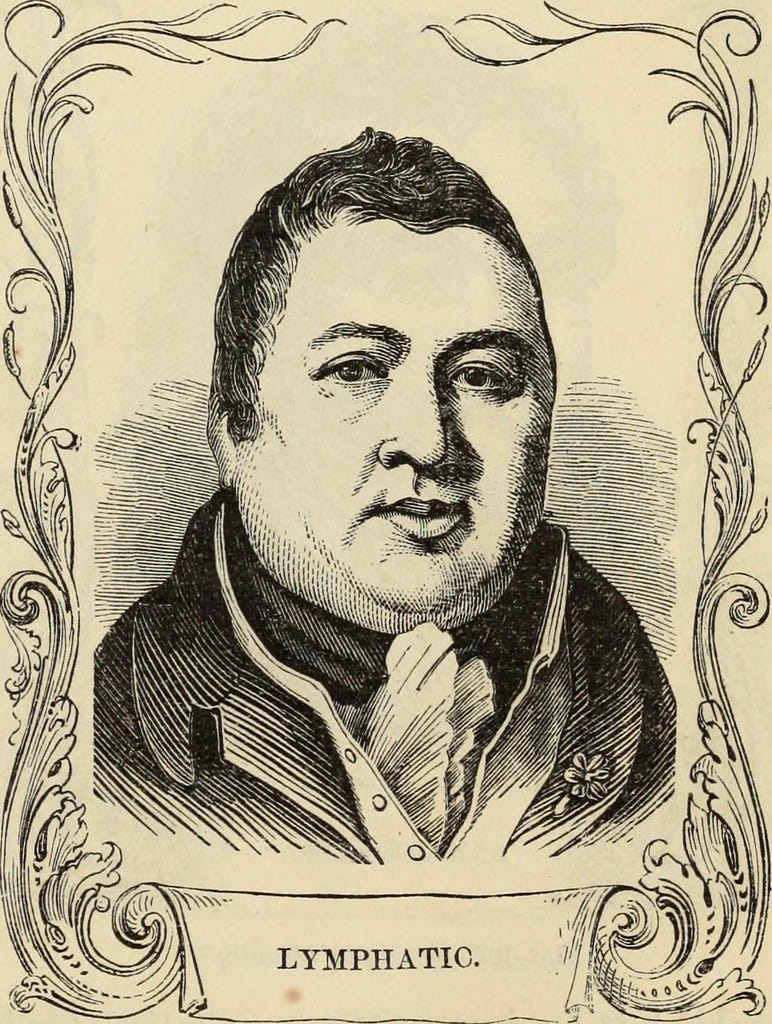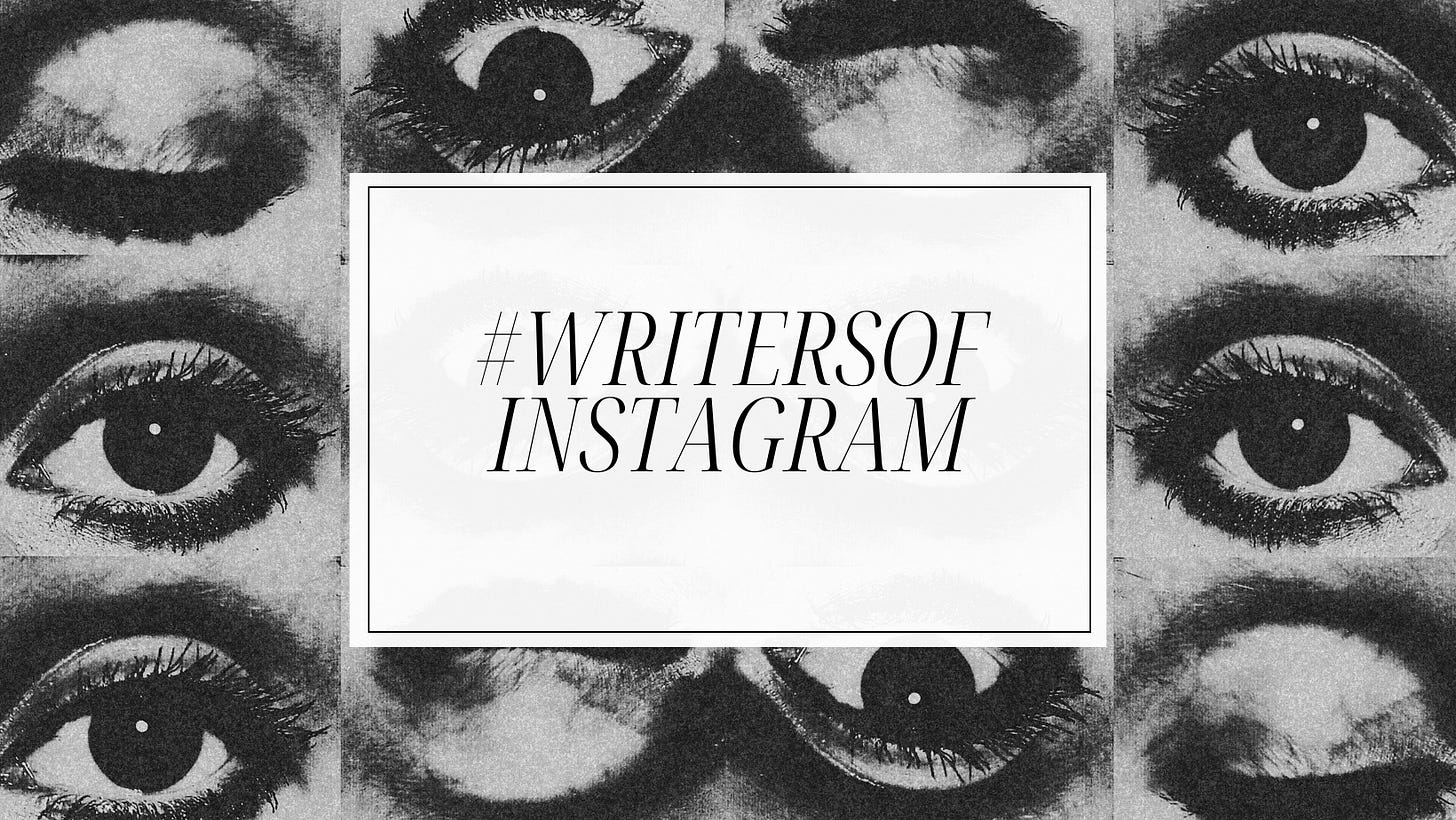The Pros & Cons of Instagram Writing
I tried writing on Instagram, so you don't have to. Would I recommend it for freelancers? Let’s weigh the pros and cons.
Most freelance writers have a social media presence of some kind. In this post, I describe how I used Instagram to house my creative writing and weigh in on whether it might be worth it for you.
Note: Skip to the end for something new—starting today, I’m introducing a weekly Writer’s Digestive of the best videos, articles, and podcasts I’ve collected, each neatly labeled by whom I think would benefit most (e.g. “For Copywriters,” “For Novelists,” etc.).
My Instagram Writing Story
When the pandemic hit in 2020, I started a poetry account on Instagram called fallingbirdpoetry. I posted quite regularly through the summer and early fall, connected with a few writers, got a handful of likes, and then let it fizzle. The impulse probably came, like most of my decisions, from a mix of curiosity and boredom.
The second time I tried writing on Instagram, my goals were more community oriented. When I began teaching German part-time in Fall 2021, I found myself with some time on my hands and speed-wrote a novel I’d planned that summer. To motivate myself, I tried to quickly conjure up an Instagram community from thin air. I posted reels, calls to action, used hashtags, and DM-ed people I found through #writersofinstagram. It surprisingly kind of worked, and I’m grateful for that time. But most of that community were friends, or at least acquaintances, before then, and when I finished the novel draft, my community folded like the temporary tent it was.
Since then, I’ve posted reflections on Instagram, screenshot from my iPhone Google Docs with no other purpose than to share. I think one of the reasons I’ve felt compelled to do this is that I want these digital acquaintances of mine to know me on a deeper level than by a photo of me carving a pumpkin with [insert clever caption about Sweeney Todd] underneath. I’m more than my face. You’re more than yours. In fact, unless you believe in physiognomy, a person’s face reveals practically nothing at all.

Of course, nobody believes in physiognomy nowadays. But the very fact that people created a complicated science to interpret facial features demonstrates that outward appearances are often deceptive, or at least inscrutable.
Well, that was a weird tangent. The point is—I no longer make a concerted effort to write for an Instagram audience. That doesn’t mean it won’t work for you. To find out whether Instagram is a good platform for you to showcase your writing, let’s hop into the pros and cons of writing on Instagram.
Instagram Writing Pros
Instagram is a slick, user-friendly social media platform—and almost everyone’s on it.
1. Popularity
Chances are high that you, your best friend, and your best friend’s mom are all on Instagram. It’s the fourth largest social media platform by user numbers, after Facebook, YouTube, and WhatsApp.
2. Profile Grid Simplicity
The grid-style profile page allows you to craft an eye-catching aesthetic that can be scanned in a quick scroll. This can have a powerful effect on any new reader. While your writing style may take a few reads to grasp, the look of your posts can immediately prompt a “yay or nay” response. “A picture’s worth a thousand words”—so the saying goes.
3. Visually customizable.
Instagram writers format their posts off-app. Some just screenshot their “Notes” app, while others handwrite in notebooks, then photograph the notebook page. I’d say the majority probably use graphic design apps like Canva. The possibilities are endless.
Instagram Writing Cons
Instagram is not designed primarily with writers in mind.
1. Formatting wastes time.
This is up to individual preference. But I’m sure I’m not alone when I say I’m here to write, not to design. If Instagram favors quick-hit impressions, it follows logically that having an immediately identifiable aesthetic is vital to achieving visibility on this platform. While I enjoy sketching and throwing together flyers, I’m no expert in graphic design. Bending over backwards to make my writing visually pleasing isn’t my idea of afternoon yoga. It just gives me a back ache.
2. Users are looking for short-form content.
According to Hootsuite, the optimal length for a reel is between 7 and 15 seconds. If people lose interest in videos longer than 15 seconds, it’s unlikely they’ll stick around much longer than that to read your content. The path of least resistance (in this case, video) gets the most traffic.
3. You have to post a lot.
You may find yourself forced into a demanding posting schedule just to keep your posts turning up in followers’ feeds. Buffer recommends posting once per day. Larger, more successful accounts have entire teams behind them to meet this demanding schedule. As an individual creator, it’s hard to compete for views.
4. Designed for performance, not community (is it really social media?)
When I created my first account in 2013, Instagram was a completely different world. I would not see ads. I would not see influencers. I would see posts from my friends. And we would go to town in the comments section. Gad—I remember having whole conversations under a post. My social circle was on Instagram together, and nobody else was looking on.
Since then, a lot has changed.
As Instagram users widened their networks, we watched the rise of influencers and took away the idea that any of us could become rich and famous if we managed to curate our lives into the perfect reality TV show. The corporations began to wake up to how our constant scrolling could make them even more money. And so, Instagram quickly became an insidious sort of marketplace for pixelated people promoting products.
I’m not a huge fan. I could try to be the little Dutch boy who single-handedly (fingeredly?) holds back the waters that threaten to flood his village, but there’s a reason the Hero of Haarlem is a myth. A single person, or even a thousand people, can’t stop a 47.4 billion dollar corporation from doing its darnedest to ruin authentic community (ok, ok, they’re not trying to ruin community—they’re just greedy).
tldr: What’s the Verdict?
You might want to try Instagram writing, if you:
Write highly visual poetry—like so visual you’re fuzzy on whether to classify it as writing or visual art. Austin Kleon is a good example of this.
Enjoy incorporating writing into reels. Sophie M. Porayko does this well.
Are good at repping a particular lifestyle aesthetic. Dakota Warren is a good example of this.
Unless you fall into at least one of these three categories, I’d recommend that beyond maintaining a very basic presence there, you put minimal effort into this platform. Instagram is worth an evening of flirtation, but I wouldn’t take it home to meet my parents.
Have you tried writing on Instagram? What was your experience? I’d love to hear your perspective.
Writer’s Digestive
The best videos, articles, and podcasts I’ve collected recently for writers of all stripes.
For all freelancer writers
This is some of the best and briefest advice I’ve found on how to write a compelling pitch as a freelance journalist:
How to Write a Good Pitch: Tips from the Editor of The Atlantic
This second resource is good for anyone starting out or trying to grow. Huberman is a neurobiology professor at Stanford. His videos and podcasts are scientifically rigorous, and you can trust them to deliver accurate, evidence-based information. In this one, he lays out a practical plan that anyone can implement to set and achieve goals. I used his tips to start up freelancing, and a couple months later, I haven’t lost steam.
For creatives of any kind (but especially poets)
I’ve enjoyed Dakota Warren’s content for a while (she makes it into this post twice!). This video is a fully transparent (“because transparency is sexy”) tell-all from an Australian poet who went viral c. 2020. She describes all the groundwork she did for years before her work was recognized, discusses finances, and reflects on why she thinks she was successful when so many others are not. I found it therapeutic and relatable as well as informative. She’s totally honest about working at a grocery store for five years leading up to her breakthrough.
For content writers
It’s all in the title. This guy walks you through the process of finding clients. I appreciate how practical this video is. It’s not telling you what to do in vague, hand-wavy terms. It’s showing you real-time.
For copywriters
This 2002 documentary charts the history of how advertisers began manipulating the masses through Freudian psychoanalysis. It’s a bit terrifying, and I think it definitely prompts you to do some deep thinking about the ethics of copywriting and public relations.
Let me know if you checked any of these resources out!









